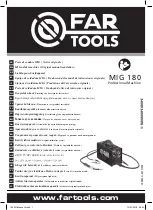
IndeeLift FTS-600 User Manual
Preliminary FTS-600 UM 1-13-2022
Page
14
of
24
Copyright 2022 IndeeLift Inc. All Rights Reserved
seated position.
Figure B: Floor to Stand
–
From a Seated Position
Figure C: Floor to Stand
–
Transfer From a Seated Position
Transfer to Stand
In this scenario, the patient is seated in a chair, on a bed, a couch, in a wheelchair or elsewhere. The patient
will need to be transferred to the FTS to assist in raising them to a standing position, (see Figure B, above).
The provider positions the FTS directly beside the patient and uses the wired-remote to position the seat
one to two inches below the height of the
patient’s
seated buttocks. This positioning facilitates a gravity-
assisted transfer eliminating the possibility of injury to the provider or the patient. The lifting is done by the
FTS.
The rise-assist handle on the patient side of the FTS is swung rearward to allow an unimpeded transfer.
The patient is instructed to grab the rise-assist handle at the opposite side of the seat to help them pull their
body to mount the seat. The provider then assists the patient to slide on to the FTS seat. If the patient is
unable to slide safely, a transfer board may be utilized to assist in the transfer.
Once the patient is fully seated in the center and to the rear of the FTS
’s seat, have them place their hands
on the rise-assist handles and let them know you are about to raise the seat.
Always ensure that the Tilt-Seat locks are disengaged to ensure the seat rotates
with the lifting person.
When they are ready, press lever
up, as indicated on the wired remote. The seat will rise until the “UP”
lever
is released or at the maximum height of 30” from the floor. Once the patient’s
weight shifts to their feet,
they are standing.
Once the lift is complete, using the wired remote, position the FTS seat to the floor or a normal seated










































